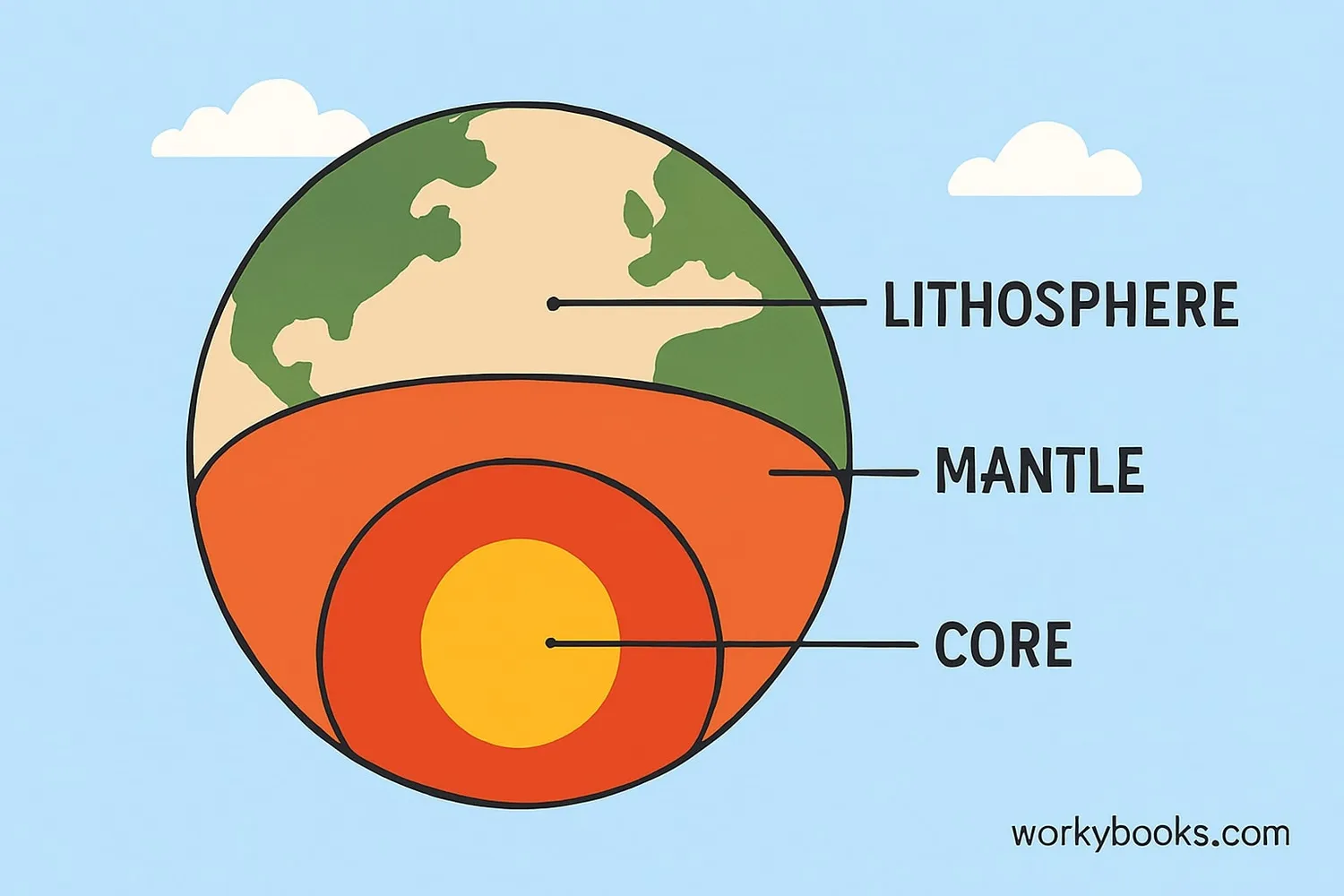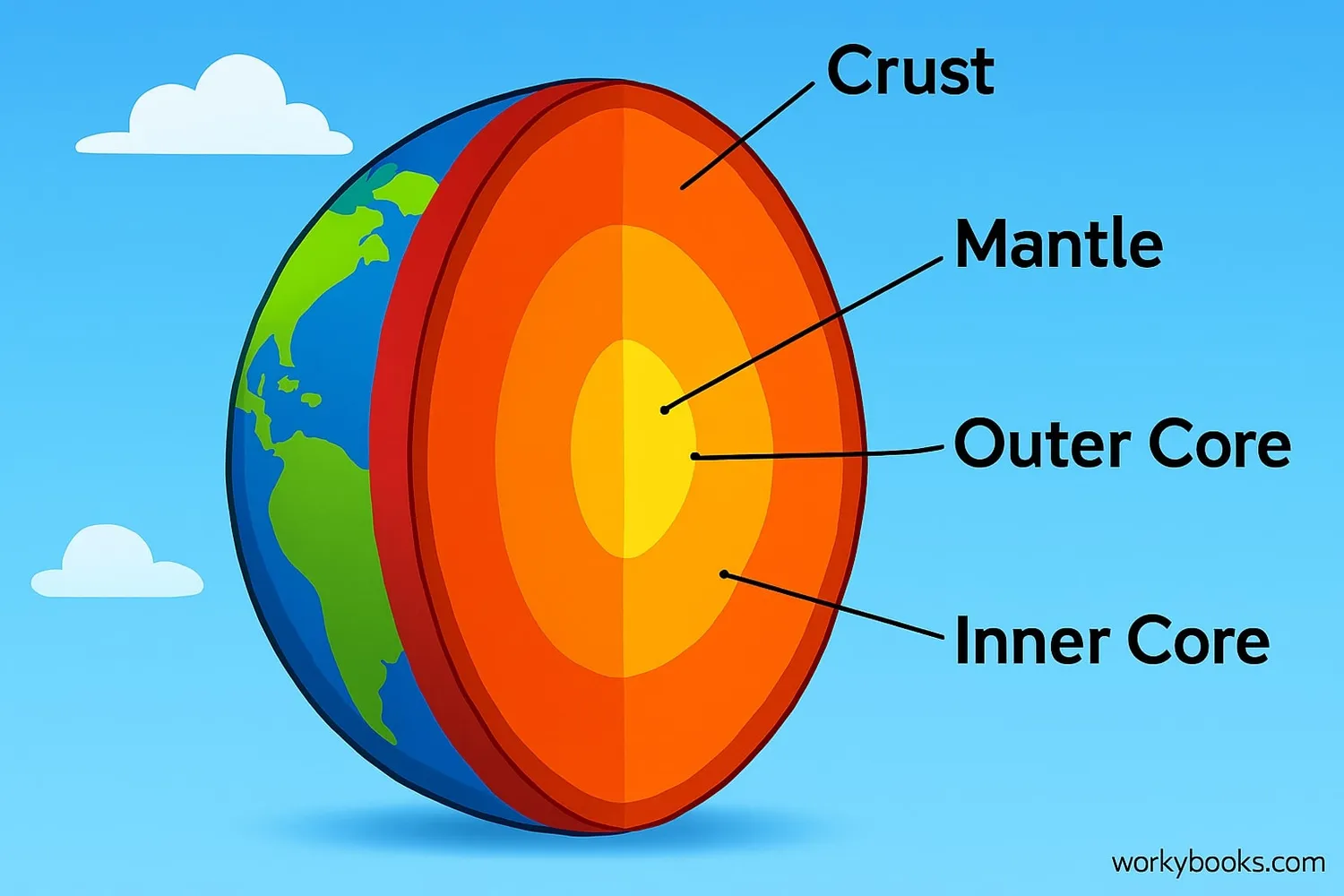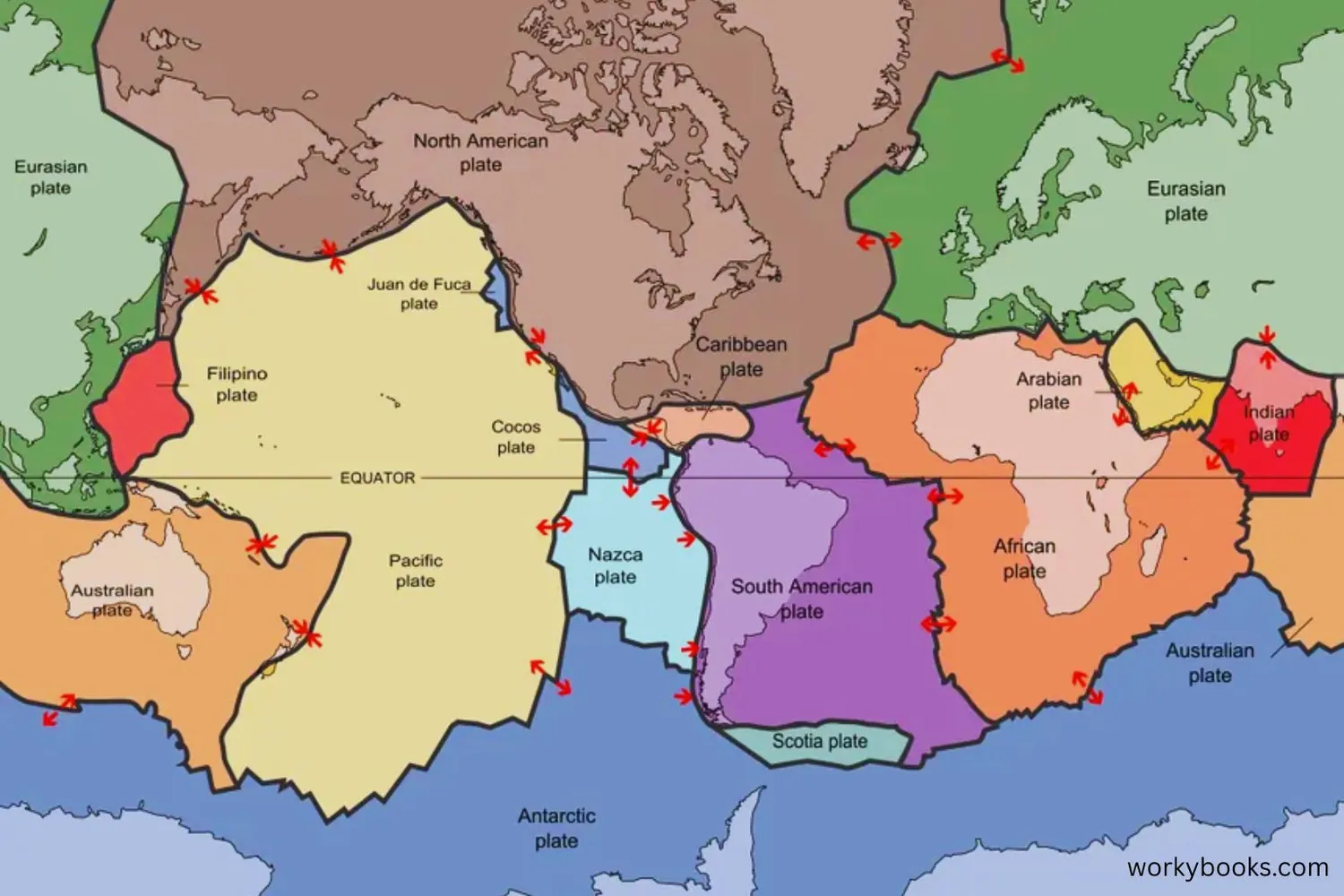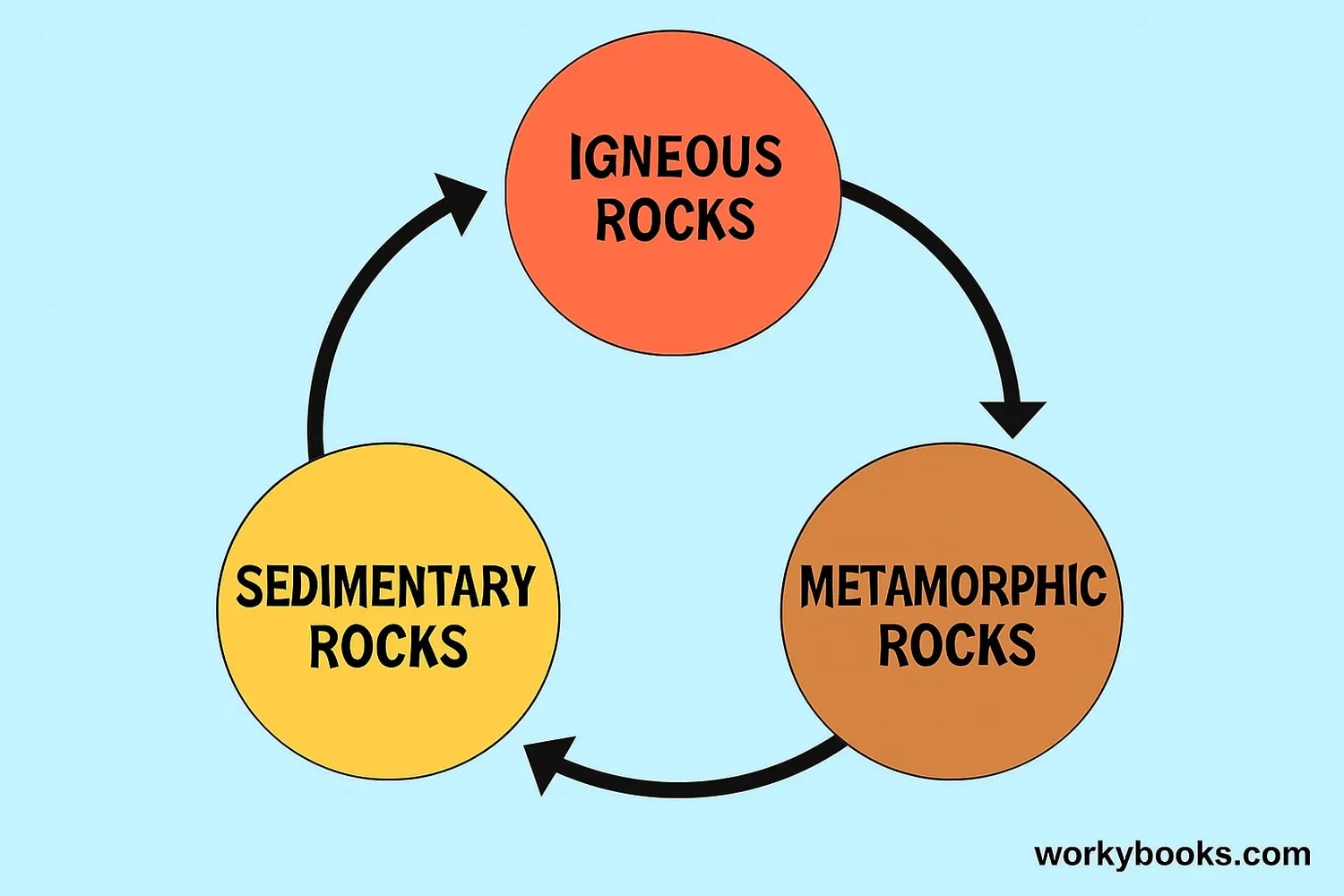The Lithosphere - Definition, Examples, Quiz, FAQ, Trivia
Discover Earth's rocky outer layer that we live on!
What is the Lithosphere?

The lithosphere is Earth's solid, rocky outer layer! It's like the crunchy shell of an egg, but for our planet. This layer includes the crust and the very top part of the mantle.
The lithosphere is broken into huge pieces called tectonic plates. These plates fit together like a puzzle and slowly move around, causing earthquakes, creating mountains, and forming volcanoes.
Definition: The lithosphere is the rigid outer layer of Earth, made up of the crust and upper mantle. It's where we live, build cities, and grow our food!
Science Fact!
The lithosphere is about 60 miles (100 km) thick under continents and only 3-6 miles (5-10 km) thick under oceans!
Earth's Layers

Earth is made up of several layers, each with different properties. Let's explore from the outside in:
Crust
Earth's thin outer layer where we live (5-70 km thick)
Mantle
Thick layer of hot, flowing rock below the crust
Outer Core
Liquid layer of iron and nickel that creates Earth's magnetic field
Inner Core
Solid ball of iron and nickel at the very center
The lithosphere includes the crust and the very top part of the mantle. Below the lithosphere is the asthenosphere, which is hotter and softer, allowing the tectonic plates to move around on top of it.
Facts:
- Continental crust is thicker but less dense than oceanic crust
- The mantle makes up about 84% of Earth's volume
- The inner core is as hot as the surface of the Sun!
Rock Fact!
The oldest rocks on Earth are about 4 billion years old - that's almost as old as our planet!
Tectonic Plates

The lithosphere is broken into about 15 large pieces and many smaller pieces called tectonic plates. These plates fit together like a giant jigsaw puzzle covering Earth's surface.
These plates are constantly moving, though very slowly - about as fast as your fingernails grow! Where plates meet, amazing things happen:
Divergent
Plates move apart, creating new crust (like at mid-ocean ridges)
Convergent
Plates push together, forming mountains or subducting
Transform
Plates slide past each other, causing earthquakes
Example: The Himalayas, the tallest mountains on Earth, were formed when the Indian plate collided with the Eurasian plate. They're still growing taller each year!
Geological Processes

The lithosphere is constantly changing through geological processes that shape our planet:
Mountain Building
When tectonic plates collide, they push up Earth's crust to form mountains
Earthquakes
Sudden movements along faults where plates meet
Volcanoes
Openings where molten rock reaches Earth's surface
Rock Cycle
Rocks constantly transform between igneous, sedimentary, and metamorphic types
These processes happen over millions of years, but we can see evidence of them all around us. The Grand Canyon shows layers of sedimentary rock, while Hawaii's volcanoes create new land right before our eyes!
Facts:
- Earth's continents move about 1-2 inches per year
- The Pacific Ocean is shrinking while the Atlantic is growing wider
- Earthquakes can occur as deep as 435 miles below the surface
Lithosphere Quiz
Test your knowledge about the lithosphere with this quiz! Answer all 5 questions to see how much you've learned.
Frequently Asked Questions
Here are answers to some common questions about the lithosphere:
Fun Lithosphere Trivia
Discover some amazing facts about Earth's lithosphere!
Continental Travelers
North America and Europe are moving apart at about the same speed your fingernails grow - 1-2 inches per year!
Growing Giants
Mount Everest grows about 0.16 inches (4 mm) taller each year because the Indian plate is still pushing into the Eurasian plate!
Ocean Floor Recycling
The entire ocean floor is recycled every 200 million years! Old seafloor sinks back into Earth at subduction zones while new seafloor forms at mid-ocean ridges.
Ancient Rocks
The oldest rocks on Earth are about 4 billion years old and found in Canada. These zircon crystals give us clues about Earth's early history!


